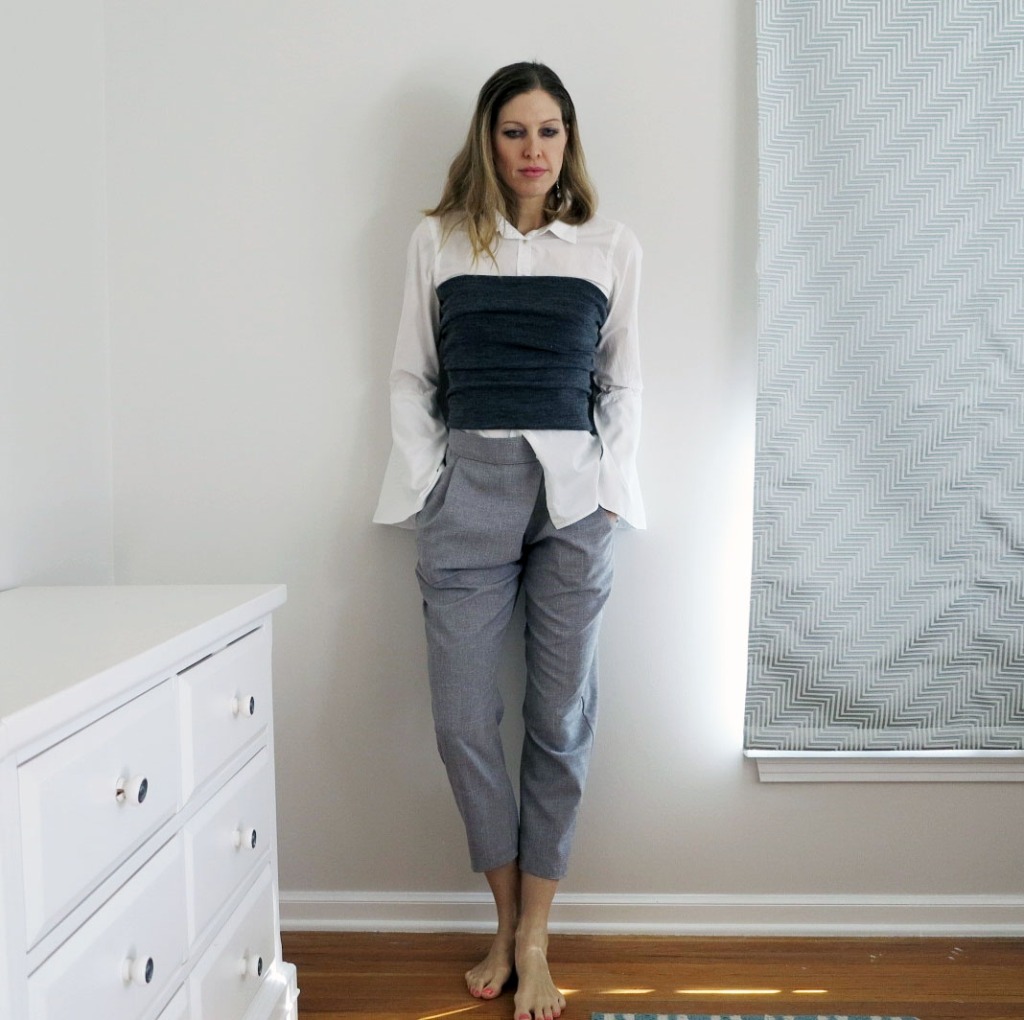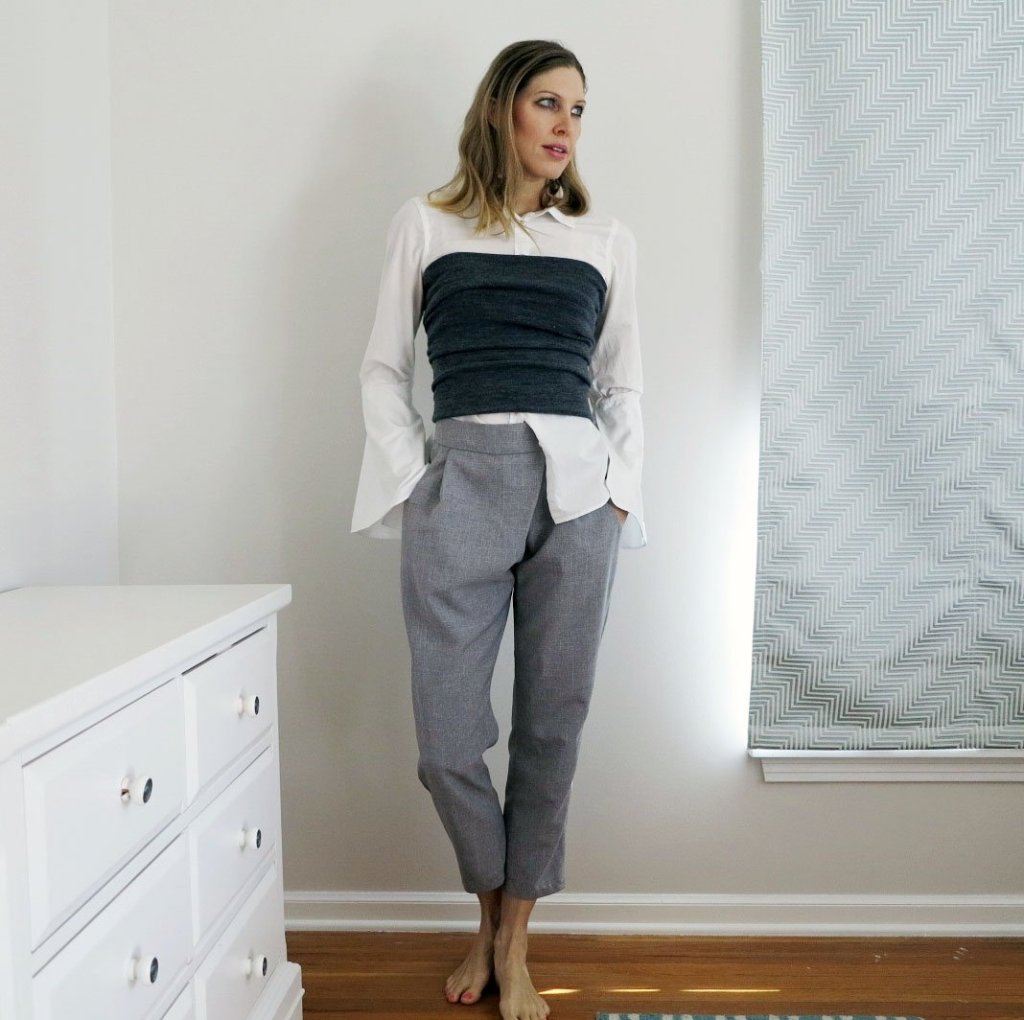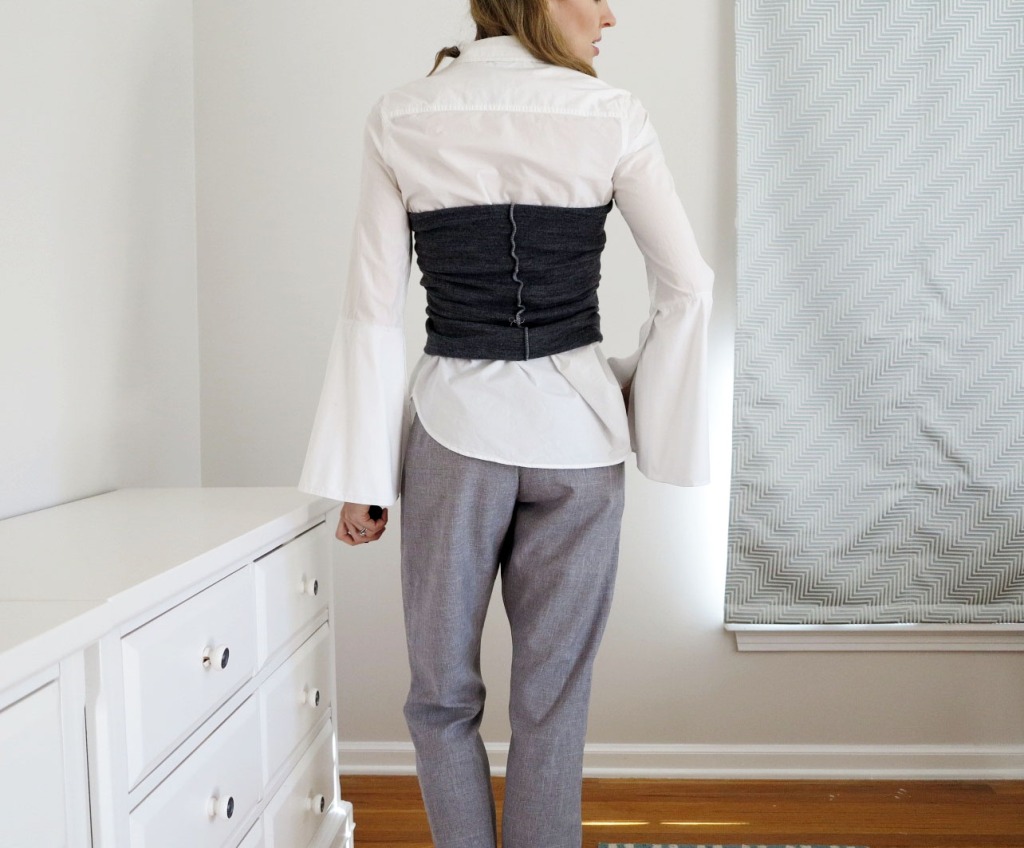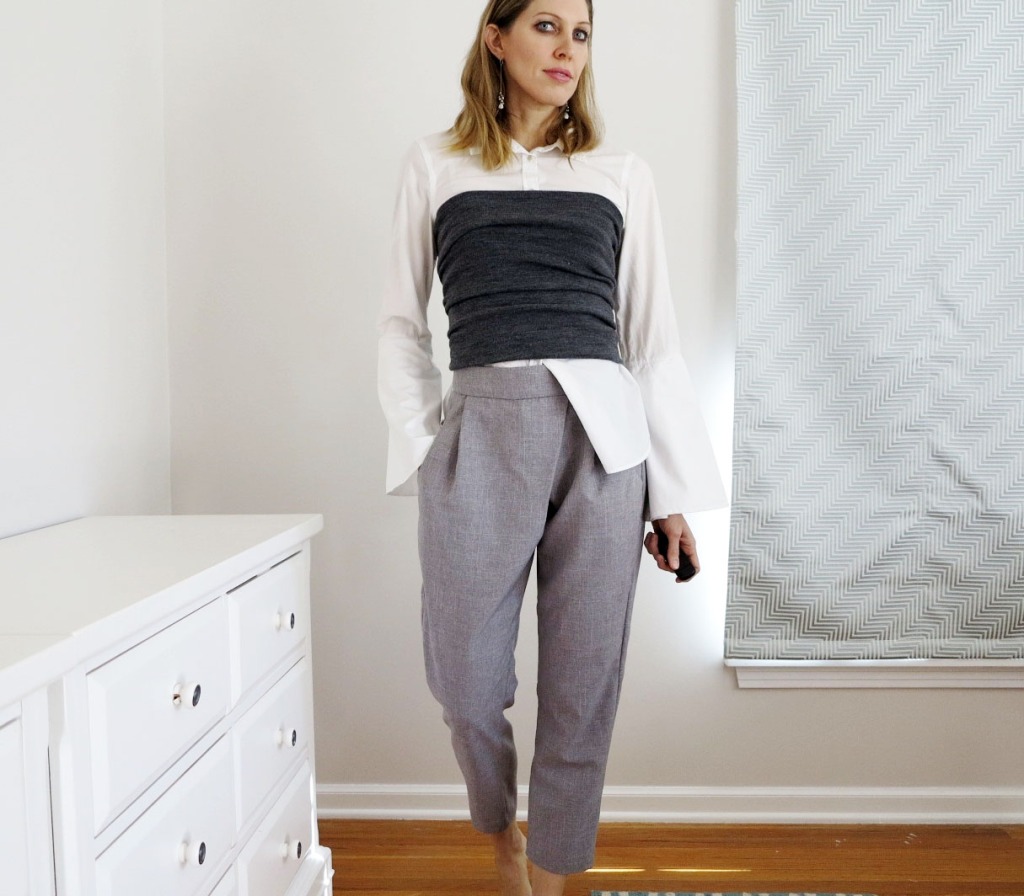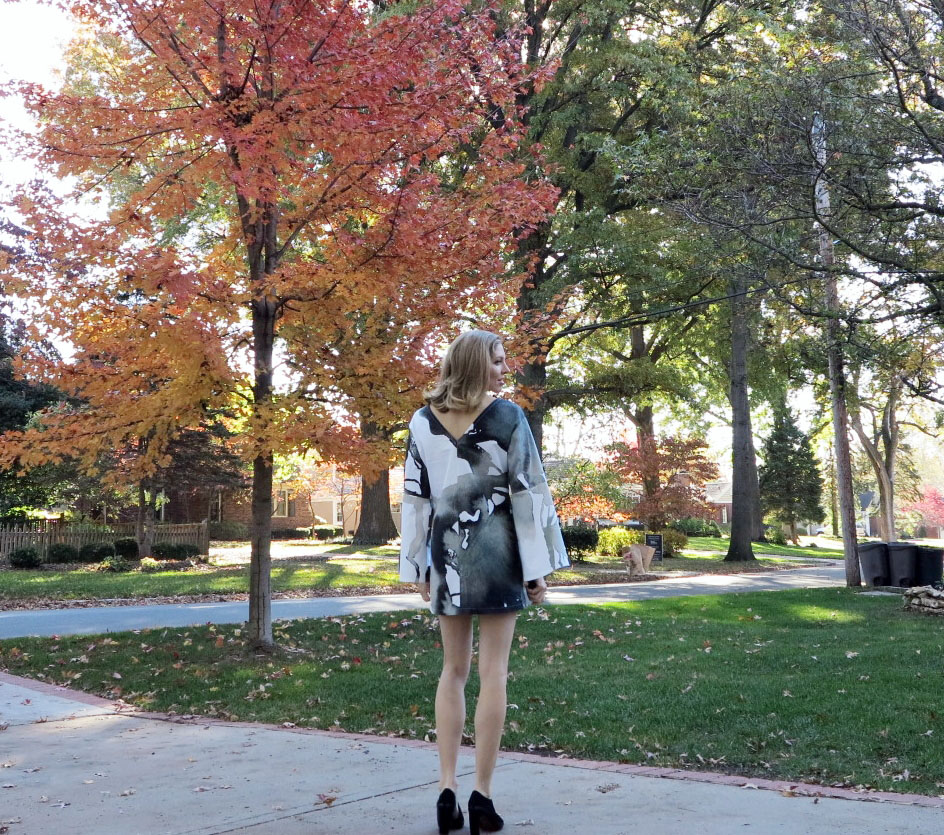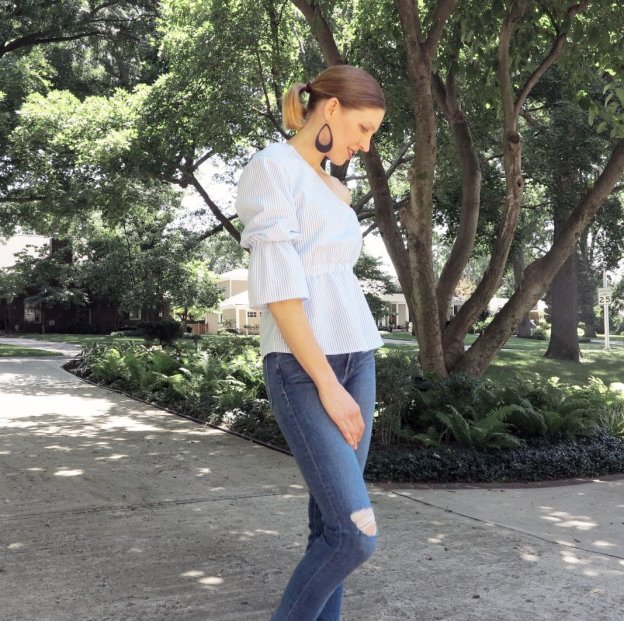I know I should sit on my competition entries like everyone else, but it’s like sitting on a hot potato, especially since I couldn’t wait to get started on this one. It’s finished, photographed, and I’ll be squeezing in as many wears as possible before Fall, so I figured I might as well share it! The inspiration came from THIS dress that I posted on my IG account a few weeks ago.
As soon as I saw the ivory lace, I knew exactly what I wanted to make with it. The only problem was that the rules stated that no trims could be used and that the outer fabric of the garment had to be made entirely of the competition fabric, and in a single colourway only. That was a big problem. The contrasting black trim against the ivory lace was the element that I most liked about my inspiration dress.

It took me a bit of thinking to come up with a solution, and a LOT of hand-stitching post construction. However, I found a way to keep all my black trim to the underside of the lace fabric and in a manner that I could reverse in the future. With the trim kept to the inside, the contrast is muted through the lace, but still visible as a subtle feature.
This is a post about my competition dress. I will share more pictures one day after I have unpicked all my handiwork to reveal the black trim again.
I designed this dress using a combination of flat pattern-making and draping. I tried very hard to design a bodice that would be low cut (and slightly shaped) in the back, yet with straps that would conceal my favourite bra. I think I did a pretty good job.



I also tried to position the lace in such a way as to avoid lining the bodice. I wanted the dress to show glimpses of skin through the lace rather than lining. But I also didn’t want the dress to be too revealing. The bodice isn’t lined at all but the ruffle provides a little extra coverage. The skirt has a short lining. I couldn’t quite manage to place the lace of the skirt in such a way that would cover my bottom completely.
The lining I used for the skirt is an ivory/beige coloured acetate. I gathered the lining in my dress rather than pleating it because I wanted to add a bit more bulk through the skirt. And that is the beauty of sewing your own clothes. My hips are narrower than my shoulders and this difference gets a little more pronounced the fitter I get so a gathered lining in the skirt helps me achieve an illusion of filling it out better and having a more hourglass figure. (I blame Pokemon, the Olympics, and active kids for getting me out running and swimming laps everyday this Summer!).
I made the straps using wide, black, foldover elastic (FOE). The gathered sleeves are sandwiched between the fold and then the entire length of the elastic is stitched down to create an enclosed strap. I used a very strong/stable FOE. Too much stretch would have made for weak straps, but a little bit of firm stretch and a lightning stitch creates very comfortable and strong shoulder straps.

The sharp contrast of black against ivory in the shoulder straps was what my heart desired, but I compromised by using it as a strap lining instead. I created lace tubes to cover those black elastic straps and hand-stitched them in place. I’ll remove those lace tubes at a later date.
I also encased the edges of the lace ruffle in black, self-made, silk binding. I then turned that trim to the underside and hand-stitched it in place. I like that I can still see a glimpse of the black through the lace. To cover the very edges of the black binding (near the neckline and CB zipper), I cut tiny squares of the competition fabric and appliqued them over the visible binding. The result is a dress with outer fabric made completely of the competition lace.



I’m so pleased with how this dress turned out. I will definitely enjoy wearing it during the last few weeks of Summer. Meanwhile, there’s still plenty of time to enter the competition and if you don’t like ivory lace, there is also red and black to choose from. I have less than a full panel remaining of my ivory lace, but I think I’ve just worked out a way to scrapbust it into another little frock!




